Construction projects around the world continue to have damaging environmental effects on air pollution, drinking water, and landfill wastes, according to UN sustainability reports. It is for this reason that Israeli and global companies are looking for ways to mitigate these harmful effects of construction on the environment, all while still maintaining infrastructure integrity, purpose, and design.
“We are actively promoting sustainable blue construction concepts for many years, and we are happy to see Israel and other countries now adapting building standards to achieve a more environmentally responsible outcome,” Michal Judovits, CCO of ECOncrete, which develops sustainable concrete that promotes marine life to flourish and grow in and around it, tells NoCamels.
Green building construction regulations refer to the energy efficiency of a building. Blue construction takes green building standards one step further and refers to the overall sustainability of a building.
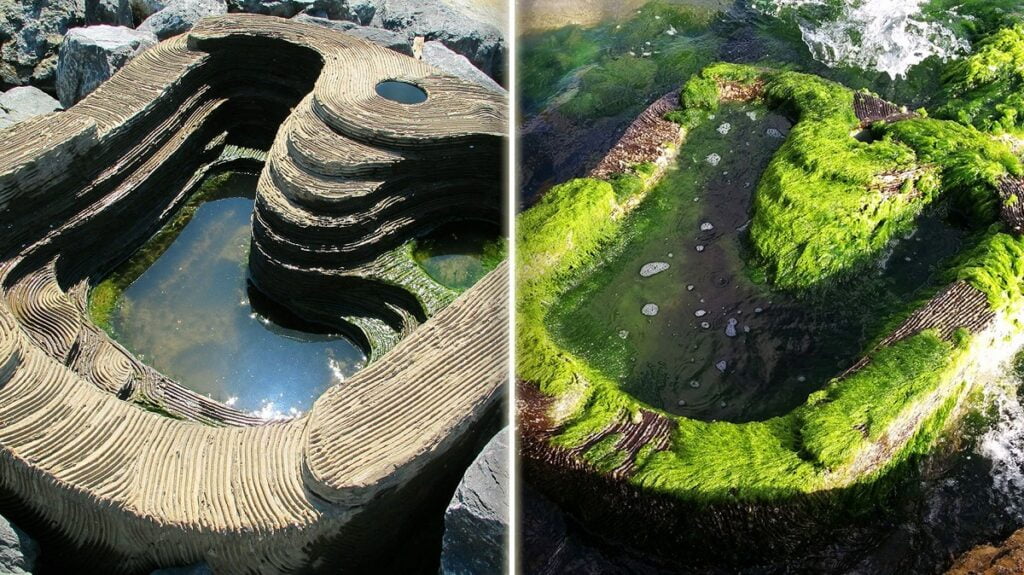
In March 2020, the National Building and Planning Council in Israel approved regulations stating that as of this month (March 2022), all new buildings must be built in accordance with green building standards. The regulations, which were signed in August 2020, are now set to gradually go into effect.
“The new building standards that are issued in Israel, and also in other countries around the world, help new technologies like ours to enter the market,” says Judovits.
In fact, a handful of Israeli companies are working on new technologies to innovate in the construction space.
Professor Daniel Mandler of the Institute of Chemistry at the Hebrew University of Jerusalem, and his team developed patented technology to create compressed salt blocks that can be used for construction.
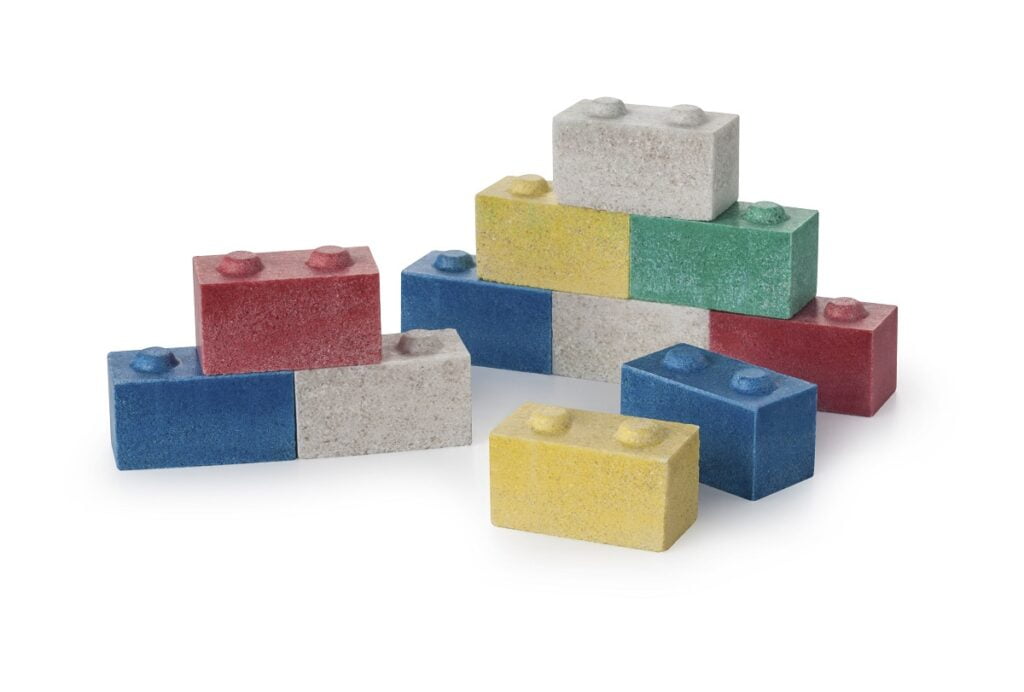
“Non-toxic, non-flammable, very strong, has very good insulation and is also very healthy for people to breathe,” is how he describes the salt building blocks.
“Cement is the second-worst pollutant on Earth. And it is directly responsible for between eight to nine percent of the global carbon dioxide production,” Mandler tells NoCamels. “People are working on finding a replacement for cement, which is not easy because the construction industry is one of the most conservative industries.”
NoCamels set out to discover how three local companies are innovating in the construction sector and where their blue and green solutions are already being used for a sustainable construction impact:
Marine Green Construction: ECOncrete
Founded in 2012 by marine ecologists Dr. Ido Sella and the late Dr. Shimrit Perkol-Finkel, ECOncrete develops sustainable concrete for constructing ecologically active infrastructures in coastal and marine environments as well as in urban landscapes. It adapts the concrete to the environment’s particular fauna and flora, and its biological traits encourage biogenic buildup.
While being tested and implemented for a decade around the world in marine construction, ECOncrete is the “only concrete technology today that complies with industry standards and provides biological, environmental, and financial benefits,” Judovits, CCO of ECOncrete tells NoCamels.
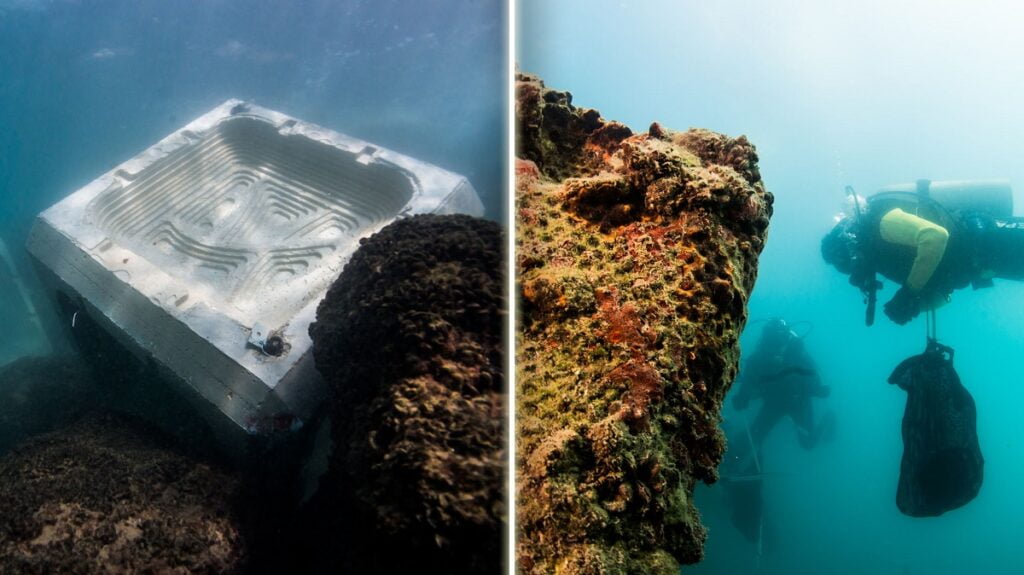
Selected as one of the Bloomberg New Energy (NEF) Pioneers for 2021, ECOncrete’s proprietary, patented technology affects the chemical composition and design of concrete, allowing it to support biological processes, contributing to “both environmental uplift and structural durability,” says Judovits.
“Concrete is the second-most consumed material in the world, is responsible for eight percent of global CO2 emissions, and is used in about 70 percent of our coastal infrastructure,” Sella, CEO of ECOncrete, told NoCamels last year.
The company says its technology makes room for diverse marine life to develop, all while keeping the integrity, structure, and durability of the concrete. It offers an admix that can be added to any regular concrete mix in order to create chemically-balanced concrete and thus promote the growth of organisms like oysters, corals, or barnacles “which act as biological glue, enhancing the strength and durability of structures, and adding to their stability and longevity,” according to their website. The company calls this added layer of protection “bioprotection”.
Judovits says the concrete industry is looking to “lower the carbon footprint of concrete construction.” According to ECOncrete, its solution is being used in 11 countries, seven seas, and 40 projects, which includes the Brooklyn Bridge in New York.
“We are happy to see that considerations for the environment are becoming more of the standard today,” says Judovits.
Urban Green Construction: TreeTube
For the most part, we take them for granted, but trees provide us with oxygen, shade, and cleaner air – much needed things in the urban environment. Currently, urban areas are suffering from a lack of healthy trees due to poor installation systems and limited growth environments under solid pavements or sidewalks, not to mention the breakage, bumps and even deadly accidents upturned tree roots on sidewalks can cause urban residents.
Enter TreeTube, a patented modular system that enables healthy tree growth in urban areas.
Established in 2019, Roni Cohen, CEO of the company and one of its founders tells NoCamels that they were inspired by the need to “provide a sustainable, easy to use, easy to install and sufficient system that provides adequate conditions for trees to grow in urban areas.”
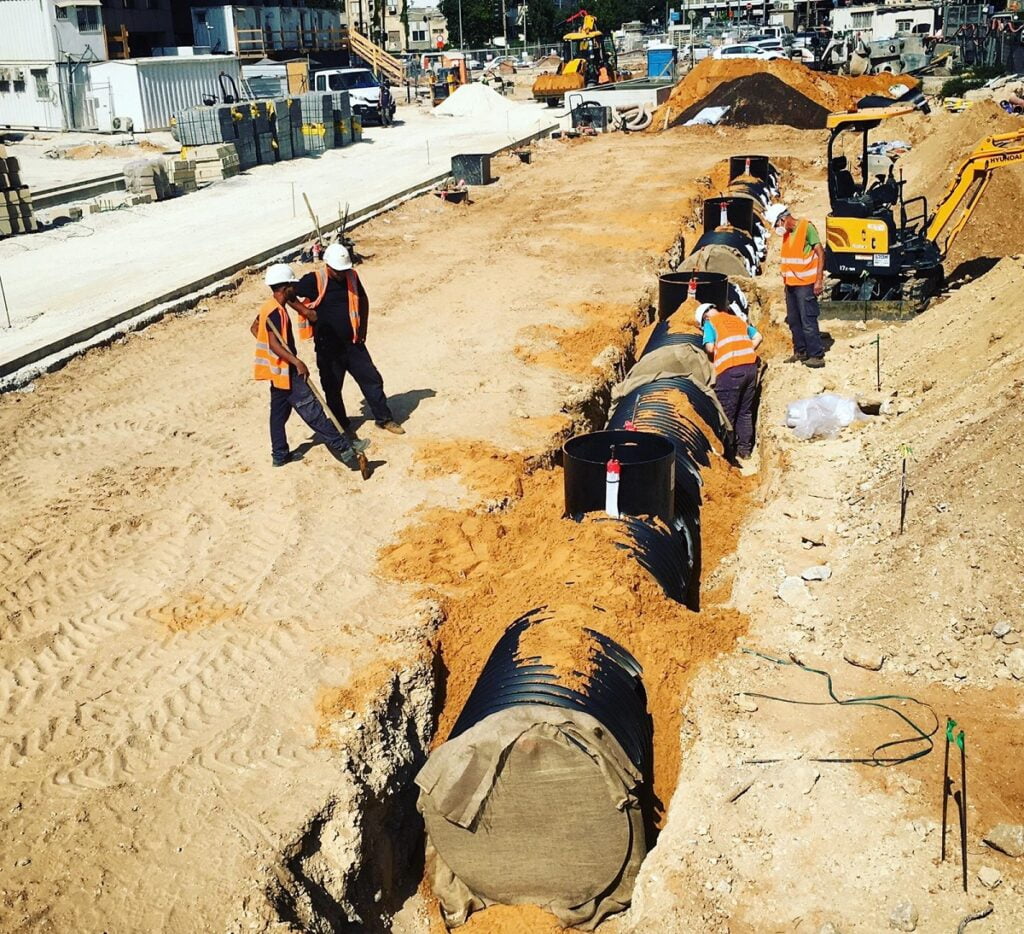
Described by the company as a “lego-like structure”, TreeTube’s system is a plastic-based tubular system, making it simple to install anywhere under sidewalks and pavement.
Sign up for our free weekly newsletter
SubscribeThe system enables two separate habitats to coexist underground, avoiding conflict with roots and sidewalks, and surrounding infrastructure. Inside the TreeTube, there is non-compacted soil, air ventilation, and irrigation as well as good drainage which allows for roots to grow in optimal conditions.
Roots in a TreeTube are naturally able to grow below the surface and emerge out into their secondary habitat, the surrounding local soil without interfering with the upper 40 cm of infrastructure.
“The system provides the required load-bearing by enabling compacting the upper substrates to the maximum level while still maintaining adequate conditions for the tree. The system is easy and fast to install and cost-effective” Cohen says.
TreeTube has its eye on the global market. Its system is already in use locally. Cohen says that in Israel, there are already discussions and negotiations about the urban greening of streets and cities and that TreeTube is constantly attracting growing interest from decision-makers as well as the urban construction sector.
“It is important to see trees as an infrastructure – just as we view sewage, electricity, and others. Only in this way will it be possible to provide the required conditions for having healthy trees and to benefit from all they can offer” he says.
Compressed Salt Construction Materials
Meanwhile, in a lab in Jerusalem, environmentally-friendly compressed salt blocks that can be used for construction are being designed, researched, tested, and developed.
According to Professor Daniel Mandler at the Institute of Chemistry at the Hebrew University of Jerusalem, salt bricks have historically been used in dry areas such as Egypt, and are used today in The Palacio De Sal, a hotel in Salar De Uyuni, the world’s largest salt flat in Bolivia.
In 2015, in what started as a regular morning for Prof. Mandler reading the news, one article he came across on Ynet turned into years of research, testing, and development. The Hebrew article spoke of a plea from the Israeli government to the public to find solutions for the 20 million tonnes of salt set to pile up annually in the southern part of the Dead Sea – and that needed to be removed in order to avoid flooding the area.
“The excess of salt is not only a problem in Israel,” Mandler tells NoCamels, saying, “Mountains of salt are dumped next to the production sites in many places such as Monte Kali in Germany, one of the largest potash companies in the world and they don’t know what to do with it.” He also says countries such as India, Belarus, Spain, and the United States are dealing with this dilemma.
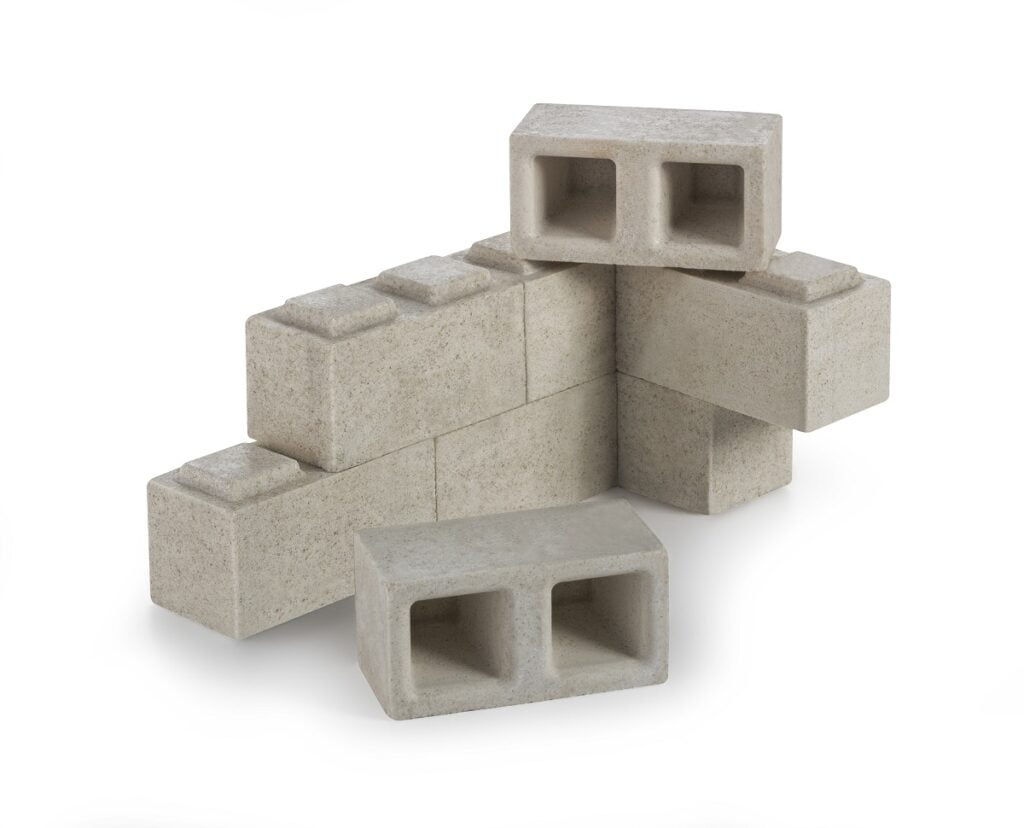
According to Mandler, “These huge amounts of salt create other issues including salinization of groundwater and damage to the environment.”
While the Dead Sea motivated him to find a solution for the massive amounts of salt, he hopes that his innovation can help address this greater issue faced by the rest of the world.
“Management of these wastes is a burden to industry and local governments and currently has no viable solution. Transporting or covering salt mountains involve costly operations and do not provide a real remediation,” says Mandler.
Over the years, Mandler and his team developed patented technology to create compressed salt blocks that can be used for construction. This process involves mixing salt with stabilizing agents, grinding and sizing it into its desired texture and color, and compressing it into its desired shape which can produce bricks or tiles.
His team developed cubes of two by two by two, eventually following with cubes of five by five by 10. “These are the largest structures that we were able to make. We were limited by the fact that we didn’t have a very strong compressor.”
If you compare their technology to cement, the energy that is required is almost zero. Mandler says, “It is very fast, there are no emissions of any gasses here and the carbon footprint is extremely low. The only steps that need energy are the grinding and compression.”
He says their compressed salt bricks are completely stable and even “five to 10 times stronger than similar bricks made of cement,” that they do not fall apart and behave very well under pressure.

These compressed salt bricks can be used in any construction, and an interesting application for the Jerusalem lab’s bricks could be the interior walls of hospitals, as salt can offer health benefits to patients.
Currently, the technology is being incorporated into fine art in Israel in collaboration with artist Lia Bruce. Bruce adds different metals and elements to the salt to create colorful, decorative Judaica pieces, tiles, and common household objects.
Due to a lack of regulations, which do not limit the use of cement, Mandler does not believe this technology will be adapted in the near future, though he is hopeful that someday compressed salt bricks may replace cement and be part of the new industry standard.
“I think that technologically, we made a big step forward. Much more development will probably be needed, but I hope that eventually, it will be able to replace the cement,” says Mandler, who is currently in touch with a large infrastructure company in Israel to further explore these salt bricks.
Related posts

Resilient And Nutritious New Plant-Based Milk Aims To Make A Splash

Chocolate From Cultivated Cocoa Comes Without Environmental Toll

Plastic Fantastic: Startup Takes PVC Back To Its Crude Oil Roots


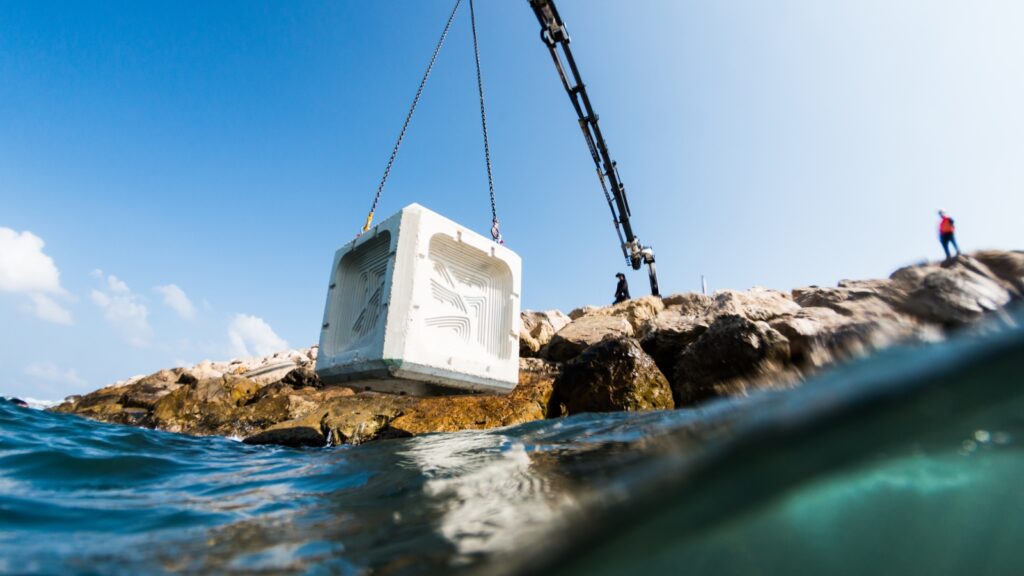

Facebook comments